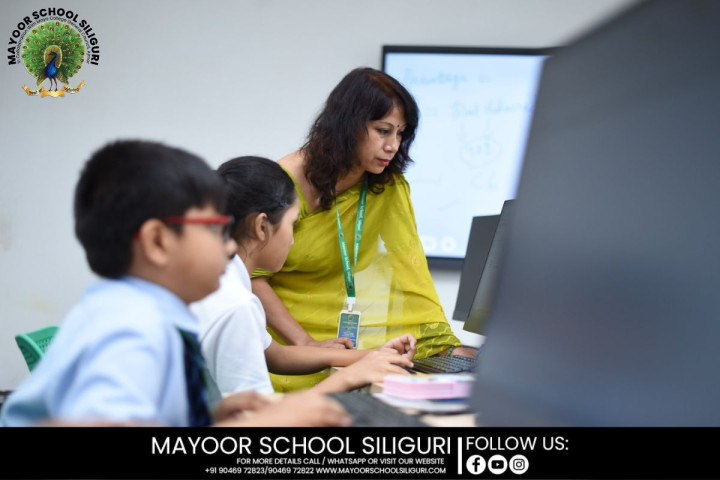
Technology has revolutionized the education sector, transforming the way we impart knowledge and wisdom to young minds. While the fundamental purpose of education remains unchanged, technological advancements have made quality education accessible to every child, regardless of their socio-economic background. In India, the integration of technology in education has gained significant momentum. The internet has made vast amounts of information readily available, and hybrid learning has emerged as an innovative approach to learning, understanding, and assimilating information. This blended learning model combines traditional teaching methods with modern technological tools. The proliferation of affordable smartphones, laptops, and internet connectivity has made high-quality education more affordable and accessible, particularly in tier 2 and tier 3 cities. As we explore the transformative impact of technology on education in India, let's examine the specific ways in which it is shaping the future of learning. Increased accessibility: Accessibility to simple and efficient learning is the cornerstone of education. Today learning is not restricted to the four walls of the classroom. Today, education knows no geographical boundaries, and technology has democratized access to quality learning opportunities. Every school in the nation is encouraging staff members to use technology. The internet and smart devices have opened up a world of information, making it possible for students to access knowledge beyond textbooks. In aspirational regions where infrastructure limitations hinder the establishment of educational institutions, technology has provided cost-effective solutions. The internet and smart devices have bridged the knowledge gap, exposing students to a wealth of information that was previously inaccessible. Availability of e-learning materials: In the past, instructors and students were the main sources of information. The library or simply gathering books from different places was the sole option for extra study. Students also found it difficult to access good source material due to the paucity of good and accessible libraries. The availability of study materials on the internet has changed the whole aspect of accessing information. Students can access study materials online, anytime, anywhere while being seated in one place. Access to knowledge has been made really simple, and online materials also give students a wide range of options to pick from. Students who are studying online with e-learning study materials are motivated to learn by themselves. Efficiency in assessment: It is crucial to evaluate what students have learned because assessment tells us whether students have actually learned what they have been taught. There are two types of evaluation: summative assessment and formative assessment. A teacher's job is not done once they have taught their students. They still have to monitor their students’ progress. The ability to track progress has simplified this aspect of education. Teachers can evaluate students' performance in real-time using online teaching applications and classroom management apps. Flexibility in learning: Flexibility is essential for productivity in every educational institution. Due to the availability of resources with the help of technology, students do not experience tension while working on projects. Students can study any course from the convenience of their homes, so there is no need to spend the entire day in a classroom. The flexibility offers students to study at their own speed and communicate with the teachers whenever they want. Many state governments are encouraging flexible learning among students, especially students from underprivileged backgrounds. It gives them a space to complete their education in their own time, and it is all made possible with the use of technology. Extending education beyond the classroom: Numerous learning opportunities have been made possible by having access to knowledge from anywhere. The idea of online classes was born, as a result, making distance learning and home learning far more successful. With the help of technology, learning can now be more creative, and students can be more engaged. A push towards basic and technical literacy is being enabled via technology. India has the largest youth population in the world, and making perfect use of their potential will enable India to grow at accelerated rates. For that to happen, education is crucial, and technology definitely plays a major role in it. In conclusion, technology has revolutionized the education sector in India, making quality education accessible, affordable, and flexible. The integration of technology has bridged geographical and socio-economic divides, enabling students from all backgrounds to access knowledge and learning opportunities. As India continues to harness the potential of its vast youth population, technology-enabled learning solutions will remain a vital catalyst for growth, innovation, and educational excellence. For institutions like Mayoor School, the best school in Siliguri, embracing modern tools and methodologies ensures students receive holistic education in a digitally empowered environment. By adopting innovative practices, such as smart classrooms, online learning platforms, and STEM-based education, schools are preparing future-ready individuals equipped to thrive in a competitive world. The continued evolution of digital education in India promises to empower future generations to succeed, thrive, and contribute meaningfully to the nation’s growth and development.
Read More Article: A Guide to Developing Math Skills in Children